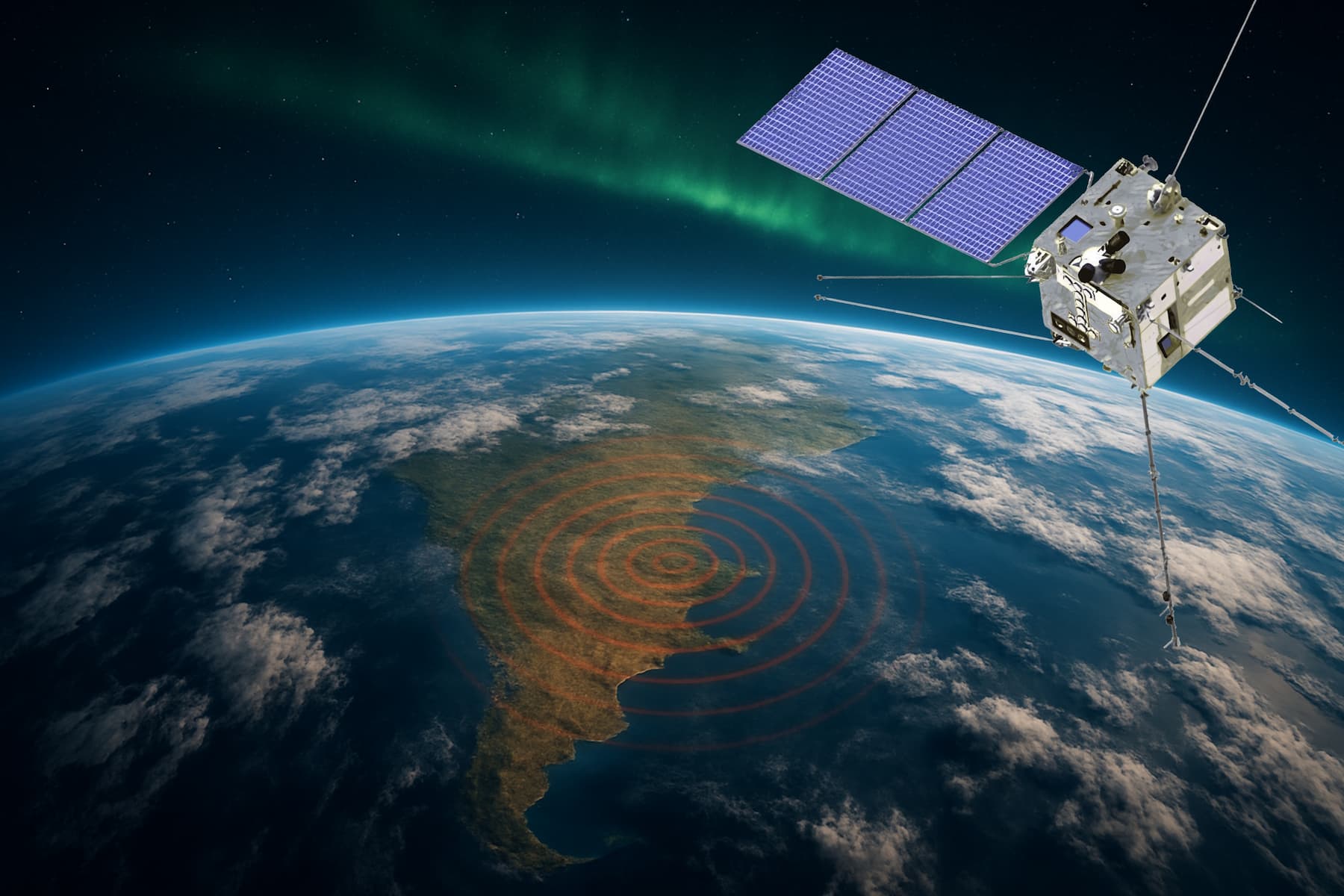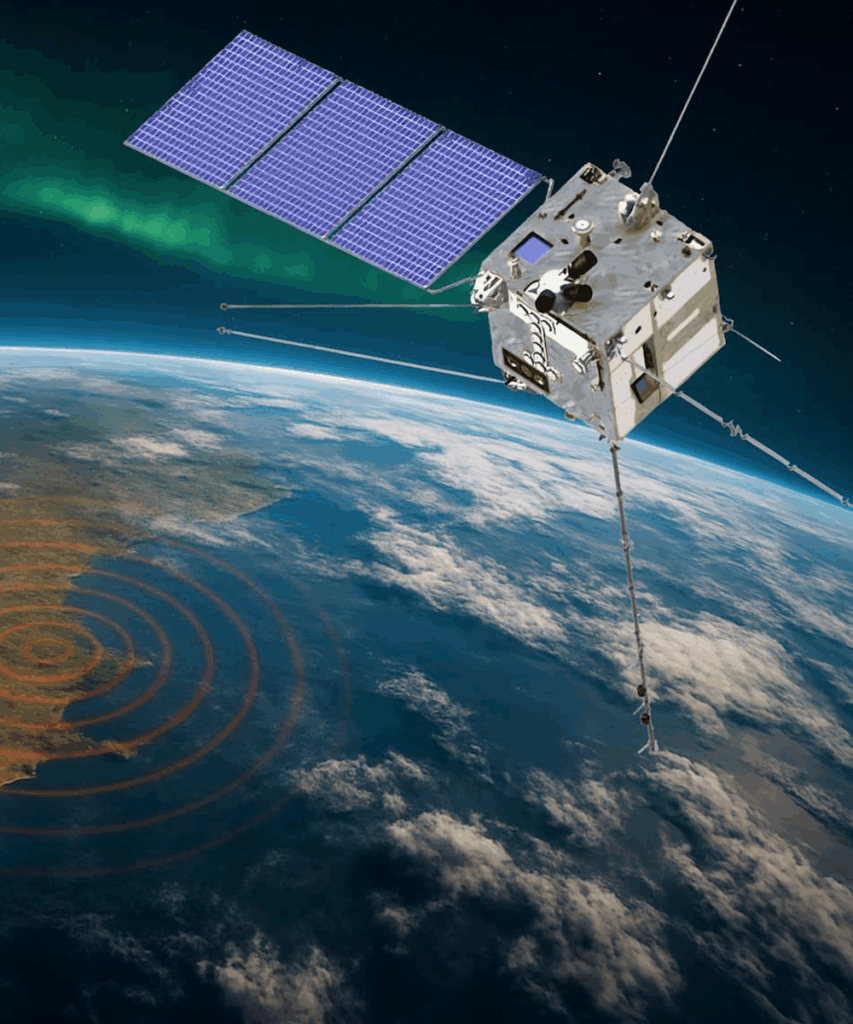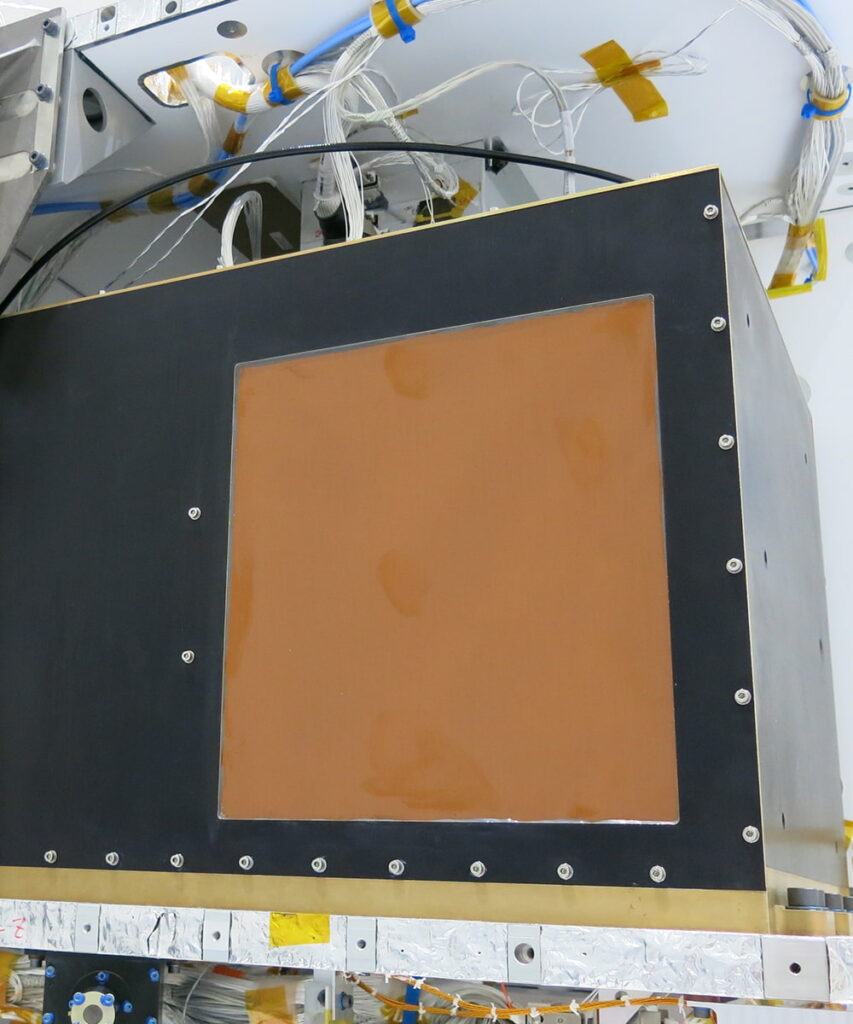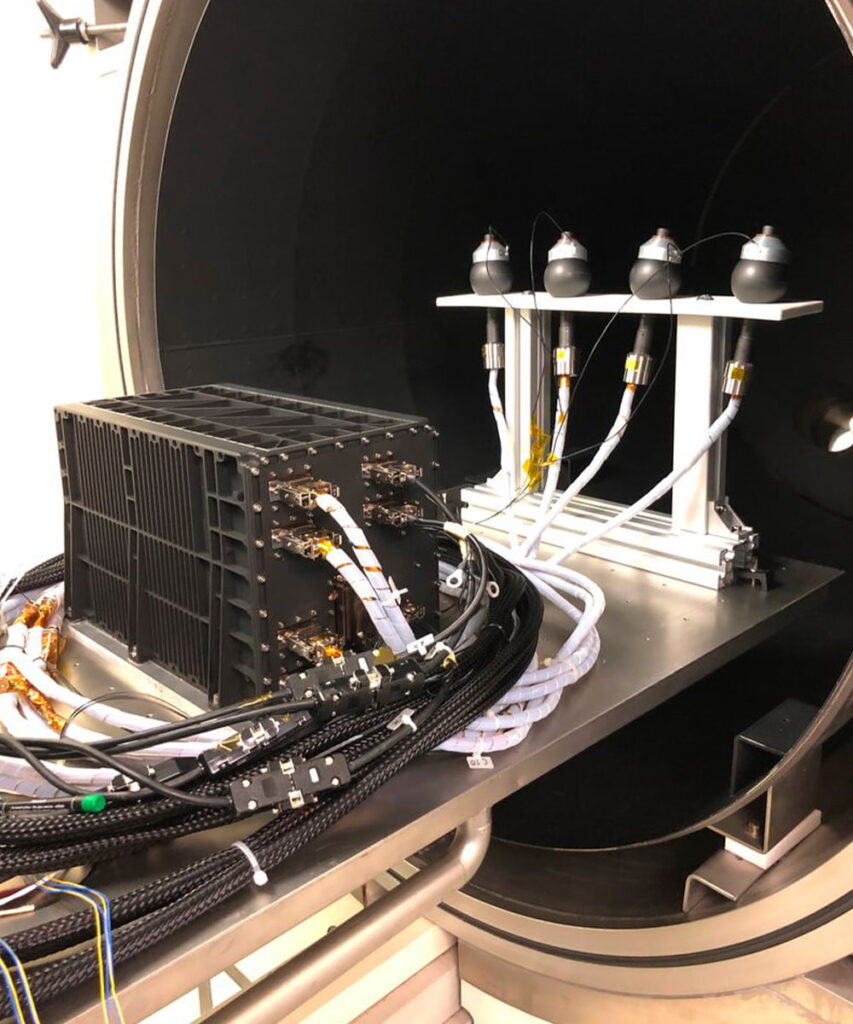The goals of the mission will be achieved by the deployment of other dedicated instruments on board the satellite:
- The Medium Energy Electron Detector (MEED), a particle detector for type identification and reconstruction of total energy and arrival direction of specific impinging particle. The MEED has been designed by the Chinese part of the Collaboration for the detection of electrons in the 25 keV – 3.2 MeV energy range.
- A Search-Coil Magnetometer (SCM) designed to measure the components of the geomagnetic field. The SCM instrument, which has been upgraded in thermal control with respect to the same instrument installed on CSES-01 mission, will provide in-situ measurements of variations in magnetic field components over the 10 Hz-20 kHz frequency range.
- A High Precision Magnetometer (HPM), designed to measure the total intensity of the geomagnetic field. The HPM suite spans the DC-15 Hz range and comprises a dual-sensor fluxgate magnetometer and two scalar magnetometers for calibration purposes including a 87Rb Coherent Population Trap (CPT) configured as a hot spare of a coupled dark-state magnetometer. HPM is the result of a collaboration between the National Space Science Center (NSSC) of the Chinese Academy of Sciences, the Space Research Institute (IWF) of the Austrian Academy of Sciences (OAW), and the Institute of ¨ Experimental Physics (IEP) of the Graz University of Technology.
- A Plasma Analyzer Package (PAP) designed to measure plasma parameters such as ion density and temperature, drift speed, as well as the composition (H+, He+, O+).
- Two Langmuir probes (LP) that allow measuring the plasma density and electron temperature. The LP unit consists of a pair of spherical probes with diameters of 5 cm and 1 cm respectively, each one installed at the end of a stub about 50 cm long.
- A GNSS Occultation Receiver (GOR), used for the vertical sounding of the ionosphere. It allows us to measure the total electron content (TEC) and to obtain electron density profiles.
- A Tri-Band Beacon: a three-frequency beacon developed to transmit in the VHF / UHF and L bands (150/400/1067 MHz). The primary objective of the instrument is to study the electron density in the ionosphere and produce 2D maps and 1D profiles of electron density, respectively. The instrument also allows us to study the influence of ionospheric irregularities on VHF, UHF and L-band transmissions from space to ground.
- An ionospheric photometer (IP) for in-situ measurements of molecular oxygen at 135.6 nm, and of LBH airglow of molecular nitrogen (and subsequent production of TEC, NmF2 and Oxygen/Nitrogen ratio data).
Most CSES instruments are arranged to collect data in two different operating modes: the “Burst mode” (data stored at high spatial and temporal resolution), which is activated when the satellite passes over mainland China and most seismic regions of the Earth (about 2 hours per day); and the “Survey mode” for the other areas of the planet.




